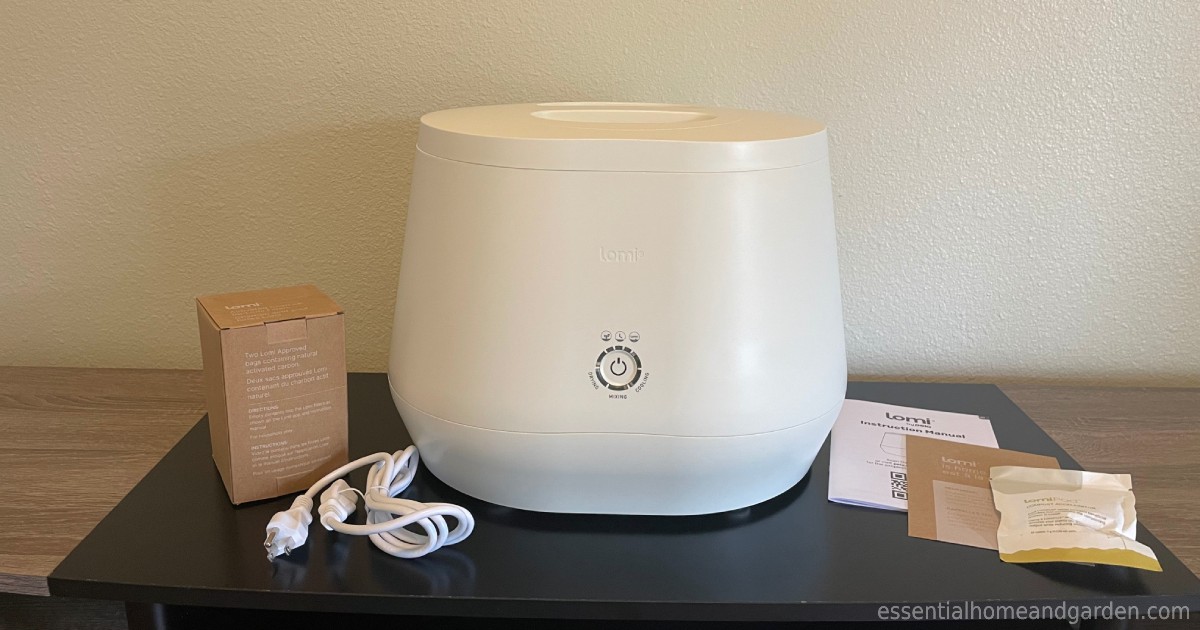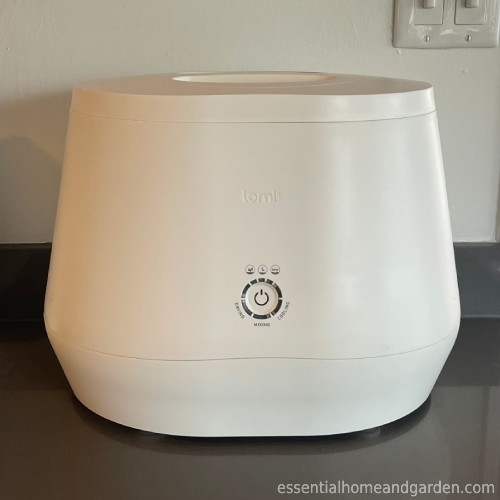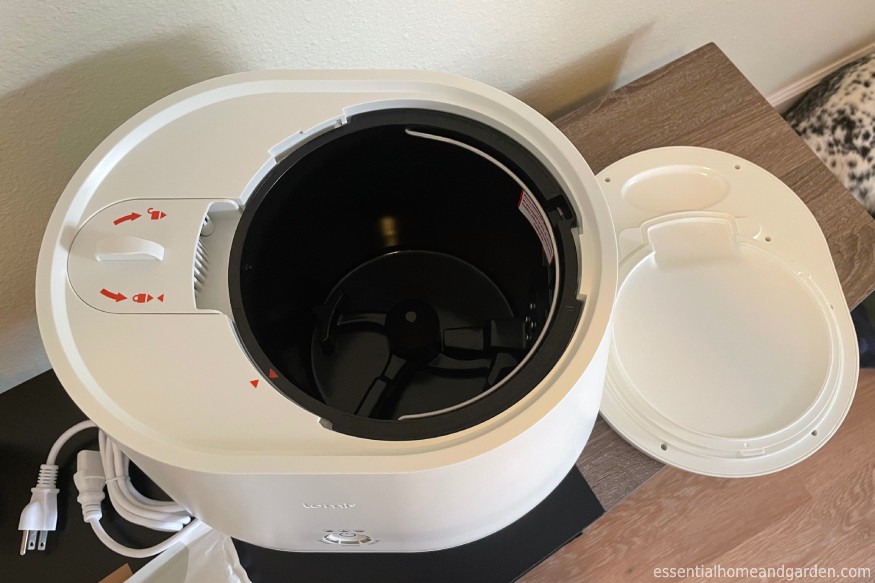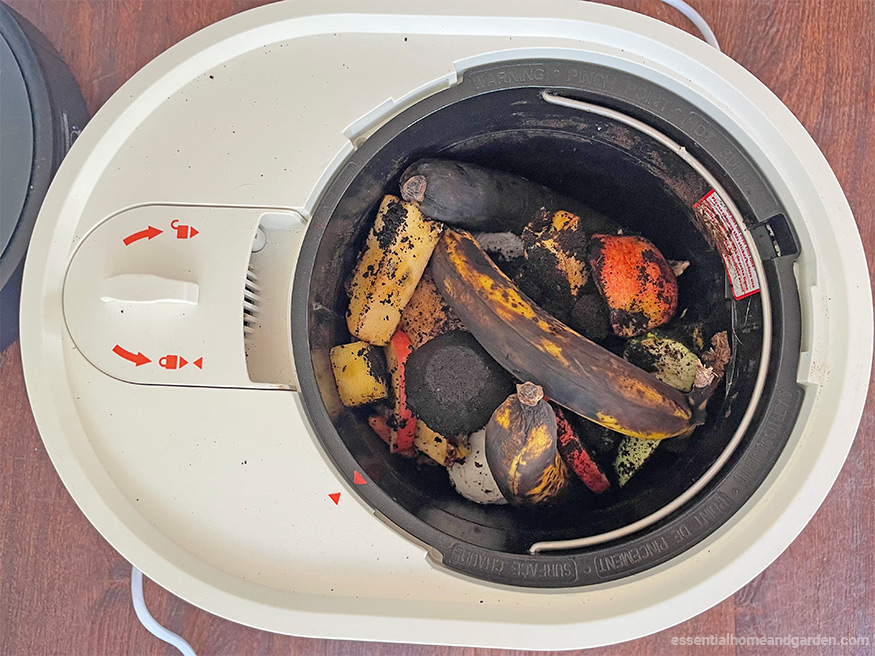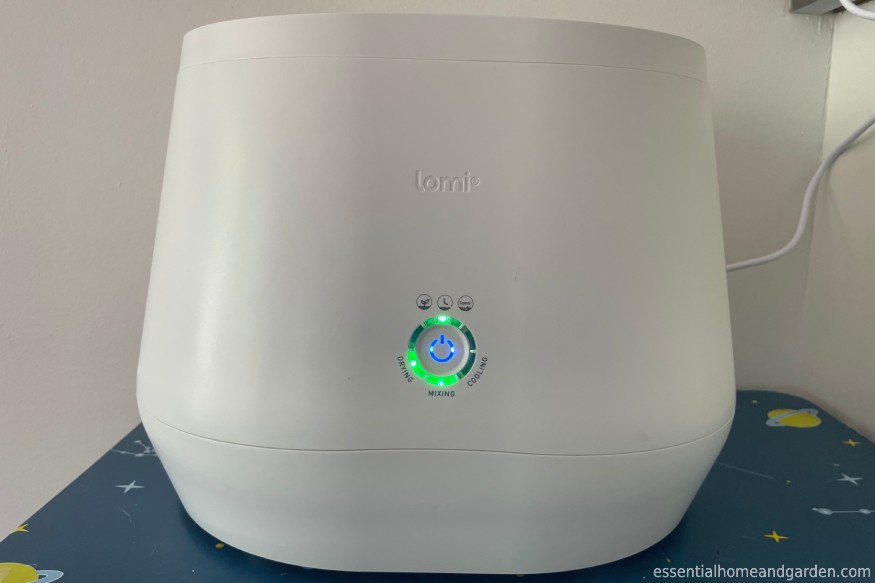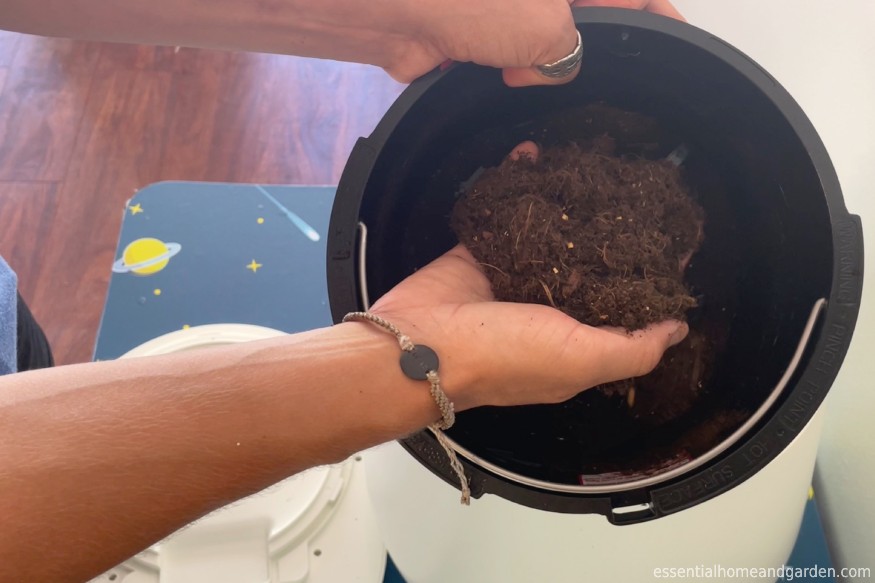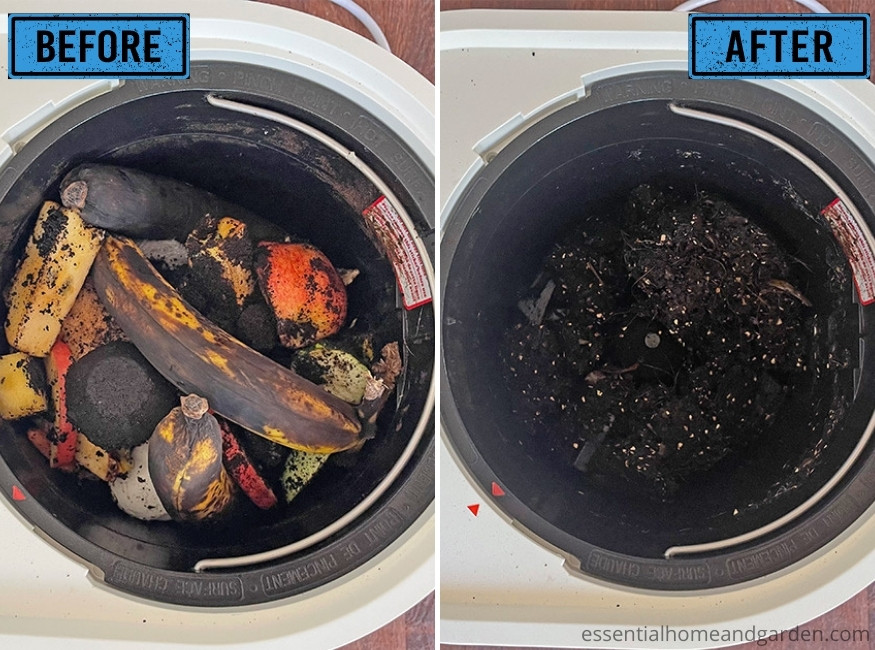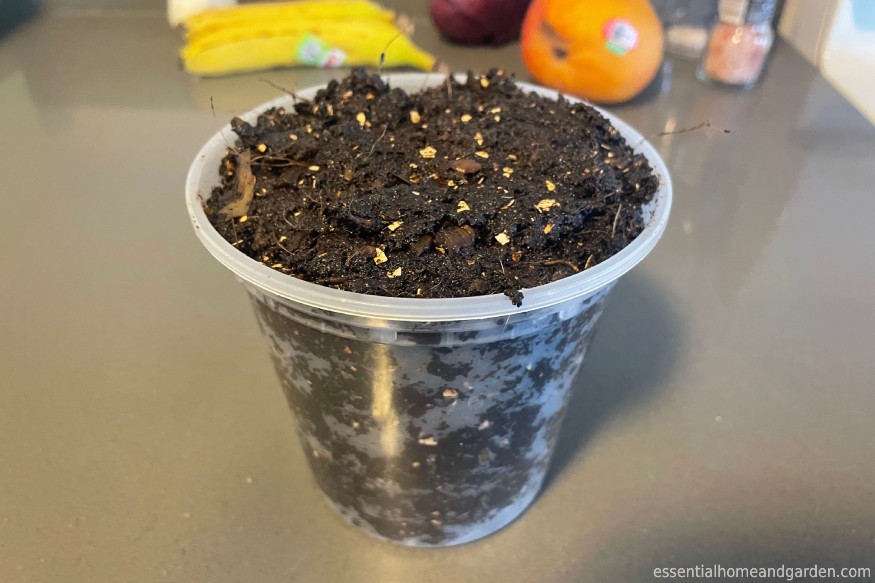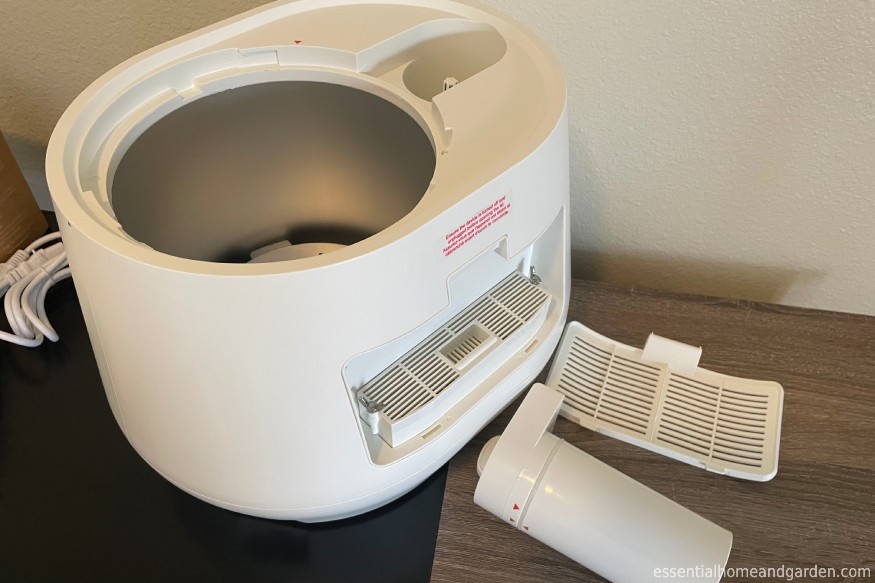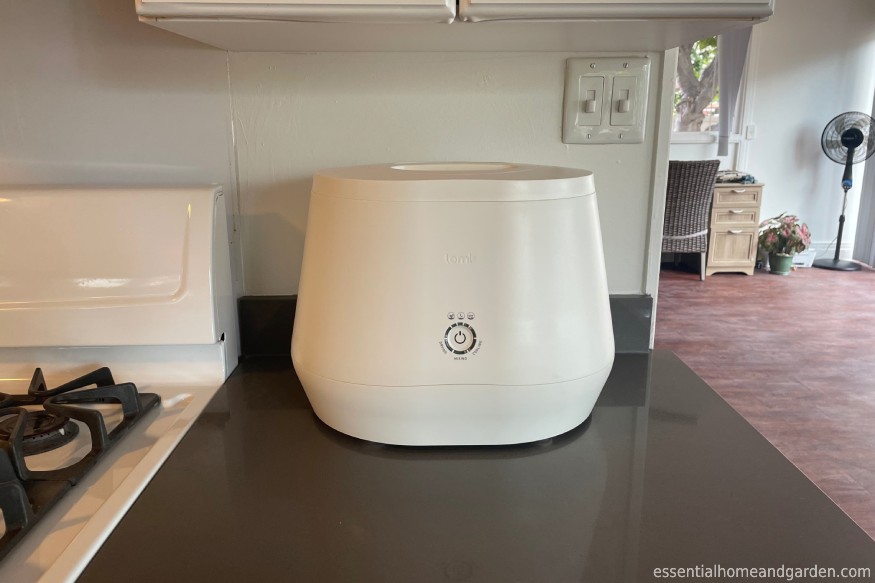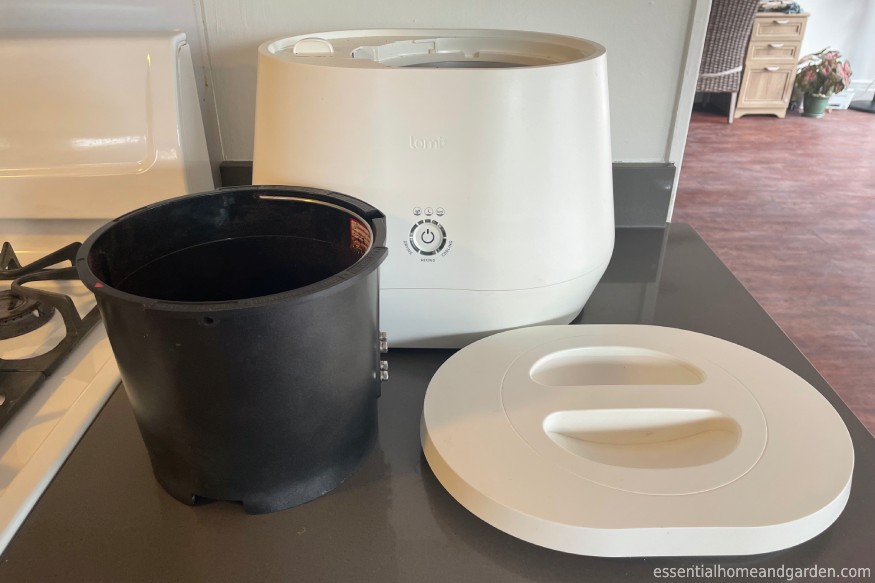Our Rating:
Key Features:
Energy efficient
Easy to use and maintain
Three composting modes
No odors and quiet operation
Turn food waste into dirt for as little as 3 hours
Home Composting Made So Easy, Anyone Can Do It!
If you’ve seen Lomi ads in your newsfeed, you’ve probably thought to yourself, this looks way too good to be true. Well, I am here to tell you that it is true! Lomi Home Composters really are that easy to use and that effective at turning food waste into usable soil.
This isn’t your mama’s composter. Lomi can turn food into dirt in as little as three hours. And, unlike traditional composting, you can use more than just fruit and veggie scraps. Lomi will make quick work of meat, cheeses, and even most compostable plastic products.
And it does all of this using a minimal amount of energy and without any smelly odors. There’s a reason these genius appliances are selling out each and every month. If you’re interested in reducing your household waste, nothing makes that goal easier than Lomi.
Update: The new Lomi Bloom has been released. Read our review here.
Review Criteria Ratings
| Overall Rating | 5/5 |
Pros
- Super easy to use
- Low maintenance costs
- Low energy use
- Highly effective
- Multiple settings to meet your needs
Cons
- A little bulky for the counter
- Requires some extra space for venting
- Will leach heat into the room
Should You Buy It?
If you’ve tried traditional composting and couldn’t stick with it due to all the work it requires, or if you don’t have the space to compost, Lomi is a great option.
This little appliance fits right on your counter and turns a difficult multi-month endeavor into a simple hours-long process.
Disclosure: It is important you understand that we may receive commissions when you click our links and make purchases. However, this does not impact our reviews and comparisons. All opinions are our own we pride ourselves on keeping our articles fair and balanced. For more info see our disclosure statement.
Lomi Composter Overview
The Lomi composter is truly one of a kind. This ingenious kitchen appliance uses movement, oxygen, heat, and the natural microbes present in food products to turn kitchen waste into dirt in as little as three hours.
This brilliant, Earth-friendly product is produced by Pela, a company best known for creating plastic-free phone cases. Pela got its start after the founder, Jeremy Lang, was overwhelmed by the amount of plastic on the beaches during his Hawaiian vacation. He set out to create a company that could help build a waste-free future.
After creating plastic-free phone accessories and sunglasses, the company took its biggest step forward in search of that goal by making a home composter accessible to all.
To date, Pela has sold over 100,000 Lomi Composters after launching the product earlier this year.
Everything about this magical product seems hard to believe. That’s why I was so excited when I got the chance to test Lomi out for myself.
Keep reading to see my full Lomi Home Composter review and to find out if this product is as brilliant as advertised.
How The Lomi Composter Performs
As soon as I received my Lomi, I started saving food scraps so I could run my first test cycle. The moment that first cycle ended, I was immediately impressed.
But the considerations for buying a Lomi go beyond whether or not it works the way it’s supposed to. Below, I’ll go over the most important points to consider before investing in a Lomi and tell you all about my experience using this product.
Up Front Costs
A new Lomi will cost you about $500 straight off the virtual shelf. Considering the price of a decent tumbling composter is about $100, I’d say this product is well worth that price. Not only is it a heck of a lot easier to use than any traditional composter, but it works way faster.
And, right now, you can use our special discount coupon to receive $50 off your order.
In addition to that upfront cost, there are some maintenance costs you should take into consideration as well.
The carbon filters on the unit require replenishing about every three months, depending on how often you use Lomi. If you use the Grow or Lomi Approved mode, you will also want to invest in the LomiPods. One pouch of which will last you 45 cycles.
Both of these products come with your first order. For refills, you can buy both together for about $45 using their subscription option.
This adds some expense to the product, but in my opinion, is still well-worth what you will get out of it, especially if you are using the soil to replenish your gardens.
How The Lomi Works
The first time I opened my Lomi, I was convinced I had just witnessed some kind of witchcraft. I couldn’t think of any other explanation for how the little machine had turned oversized chunks of food waste into dry dirt right in front of my eyes—and with no odors and hardly any noise.
After I did some research, I realized Lomi wasn’t using magic, it was taking advantage of everything science knows about decomposition to move the process along at warp speed.
It starts with a grinding cycle that reduces whatever food waste you put into the bin into tiny pieces that decompose much more quickly than large pieces. This step is brilliant because it means you don’t have to pre-chop any of the food. As long as it fits in the bucket, you can toss it in.
Next, Lomi lets the microbes naturally present in food products (and those added with the LomiPods) to get to work. These microbes require oxygen in order to break down food matter. Lomi provides this by constantly moving the scraps around and pulling in air from the outside.
Lomi facilitates the next step of microbe decomposition by heating the product, then cooling it back down in its final stages.
Once the moisture sensors signal that the product has been fully reduced and all moisture has been removed, the unit cools completely. At this point, you’ll hear a ding letting you know your Lomi soil is ready.
How long this process takes depends on which of the three modes you choose.
Eco-Express Mode
Eco-express mode is the default mode. On this setting, Lomi works at high temperatures to quickly reduce waste to soil in about 3 to 5 hours. This setting is only applicable to food scraps and cannot be used with bioplastics or packaging.
It is the most energy-efficient setting and the fastest, but it does use high temperatures which means the beneficial microbes in the soil product are destroyed.
The Lomi manual recommends putting this soil product in your green wastecan. I have found that it makes an excellent fine mulch cover for potted plants and in the garden. I also see no harm in mixing it with your normal soil to increase the overall volume.
Lomi Approved Mode
Lomi-approved mode is meant to be for food scraps that also contain bioplastics, bio containers, and other compostable goods approved by Lomi (you can download the full PDF with this information, here).
This setting runs a little longer to assure these harder-to-break-down items are fully processed. It will take between 5 and 8 hours to run a cycle in this mode. Adding a LomiPod to this setting is recommended to aid in this breakdown.
Like the soil created during eco mode, this soil can be put in your green waste can. I also used it as a mulch-like covering and mixed it in with my commercial potting soil.
Grow Mode
Grow mode is the setting you’ll want to use if you are looking to create healthy, nutrient-rich soil for your garden. This mode works at much lower temperatures to turn food waste into living soil. Adding a LomiPod to the beginning of the cycle will help with the breakdown and create a richer, more beneficial final product.
This low-heat cycle will take about 16 to 20 hours to complete. While it uses less energy per hour given that it doesn’t need to create as much heat, it does run for a significant amount of time, which means more energy is used overall.
But, for soil that will work hard for you after Lomi worked hard to create it, it is well worth the time and effort to use this setting.
How Much Does The Lomi Cost To run?
The biggest hesitance I had with this product when I first heard about it, was that it takes energy to run. When you’re trying to do something green, using more energy is usually not the best approach. But the truth is, Lomi does not use as much energy as you might expect.
The marketing material claims that Lomi has a net positive impact. This means it diverts more food waste from landfills and prevents more methane emissions from entering the atmosphere than it uses in electricity.
This is all great, but what does that mean for your electric bill?
According to the website, Lomi uses 60kWh of electricity per 100 cycles. I measured the energy use on my own test runs and found this number to be a touch low.
On eco-express mode, the cycle lasted just over 5 hours and used 1.29kWh. This equates to more like 130kWh per 100 cycles. Or, in more useful terms, about 17 cents extra on your electric bill for each eco cycle run.
Both grow mode and Lomi-approved mode will cost you a little more. But even still, the cost to run is impressively low.
If you ran your Lomi twice a week for a month, you’d end up with about 16 cups of soil at a total cost of $1.36. Not exactly enough to save you money at the garden store, but certainly worth it to keep that food out of your trash can and out of the landfill.
Size and Placement of The Lomi Composter
Lomi is marketed as a countertop appliance. This might be a bit of a stretch as it really is too bulky unless you have a lot of counter space to spare.
More importantly, it requires a good deal of empty space behind it. The manual recommends 6 inches at least. I had mine about that far from the wall and still ended up with water droplets running down the drywall from the vent.
This isn’t a big deal, but make sure you have a study, wide surface to use your Lomi on while running it. The more airflow, the better, as it does put off some heat in eco and approved modes.
In terms of capacity, this thing isn’t your typical composter. It is made to process one small load at a time. The bucket capacity is just over 2 quarts (2 liters), which yields around 2 cups of soil.
My only gripes with Lomi are these size restraints. I would love it if the unit were smaller and its capacity was larger. But this is getting pretty nitpicky. The machine performs magic, after all!
Lomi Composter Alternatives
While there are some products similar to Lomi in development by other companies, the only true competitor on the market at the moment is FoodCycle by Vitamix.
This food waste processor is a bit cheaper than Lomi and has a similar capacity. However, it only has one setting which takes about 4 to 8 hours. And, unlike Lomi, this appliance reduces the volume of food waste by drying and shredding it, rather than producing true compost.
The result is a chippy mulch-like product rather than fine soil with some fibers like you get with Lomi. And you do not have the option for a low heat mode to create true nutrient-rich compost.
